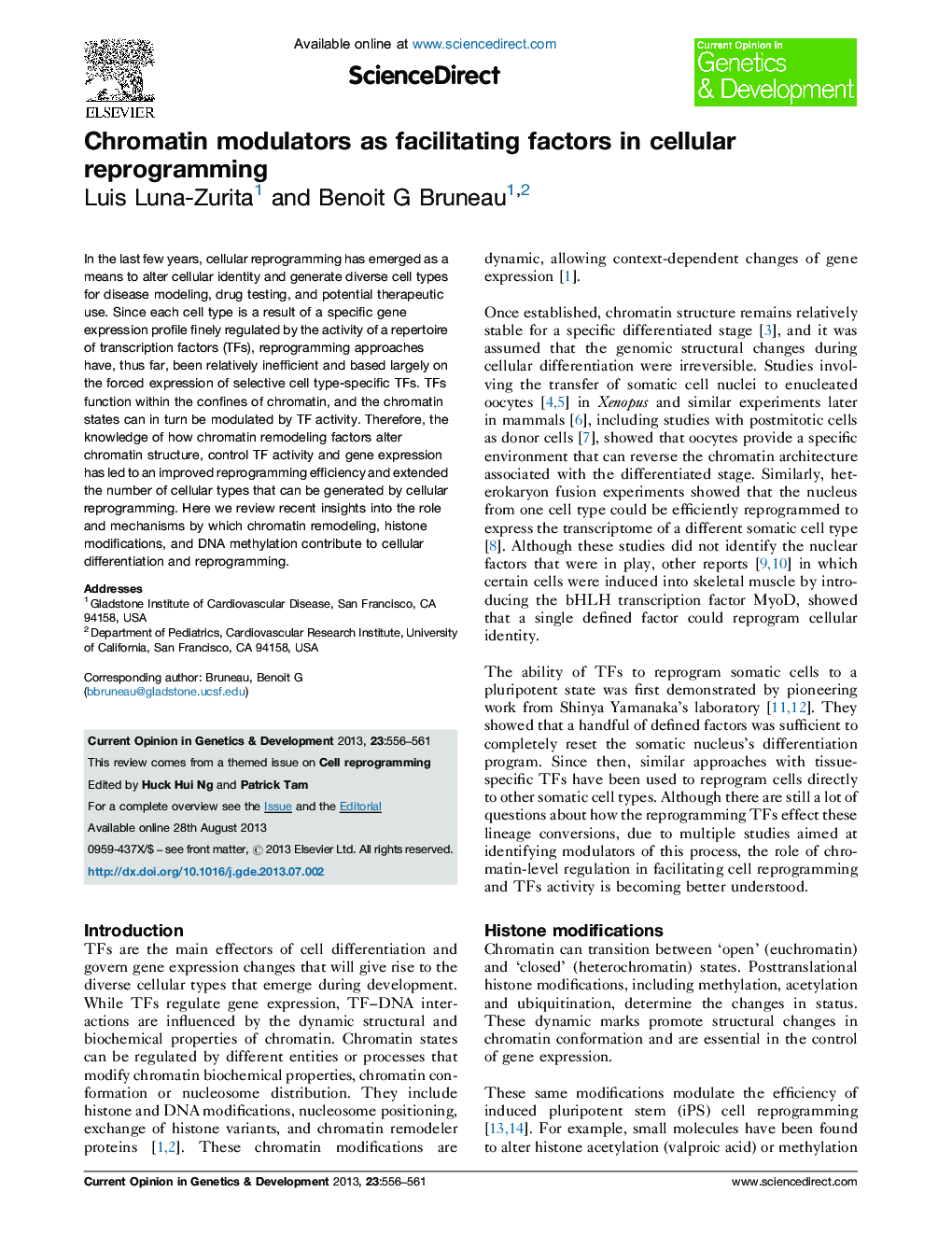| Article ID | Journal | Published Year | Pages | File Type |
|---|---|---|---|---|
| 5893655 | Current Opinion in Genetics & Development | 2013 | 6 Pages |
In the last few years, cellular reprogramming has emerged as a means to alter cellular identity and generate diverse cell types for disease modeling, drug testing, and potential therapeutic use. Since each cell type is a result of a specific gene expression profile finely regulated by the activity of a repertoire of transcription factors (TFs), reprogramming approaches have, thus far, been relatively inefficient and based largely on the forced expression of selective cell type-specific TFs. TFs function within the confines of chromatin, and the chromatin states can in turn be modulated by TF activity. Therefore, the knowledge of how chromatin remodeling factors alter chromatin structure, control TF activity and gene expression has led to an improved reprogramming efficiency and extended the number of cellular types that can be generated by cellular reprogramming. Here we review recent insights into the role and mechanisms by which chromatin remodeling, histone modifications, and DNA methylation contribute to cellular differentiation and reprogramming.
